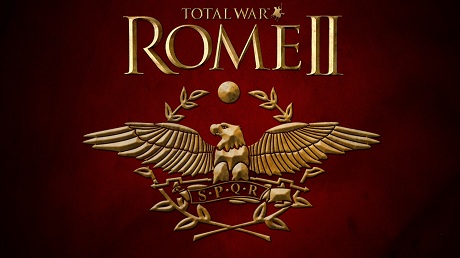Assault Bireme - Auxiliary Infantry
With a ramming attack that can break an enemy hull, these ships are deadly weapons.Able soldiers, well schooled in war, and eager to serve Rome.
The waterline ram was first mounted on a vessel in around 850BC. Warships and naval tactics were transformed. Ships were no longer platforms for infantry battles on the water; the ship itself became the weapon. Galleys changed as the new reality sank in. Ramming at speed would hole and sink an enemy, therefore slimmer, faster, handier ships were required. More speed on demand obviously required more oars a fast ship with a single row of oars ended up being stupidly, impractically long. The solution, then, was to put in a second set of oars above the first, but slightly offset to allow for rowers' benches. These biremes, a Latin word meaning 'two oars', or dieres, the Greek equivalent, were no longer than previous designs but had twice the number of rowers. They were fast, manoeuvrable, and could carry a fighting contingent. Some nations also gave their bireme crews fire pots; these clay pots filled with oil and pitch were hurled at enemy ships in the entirely reasonable hope of setting them ablaze.
(Auxiliary Infantry)
Auxiliaries supplemented the Legions of the late Republic and Principate and were recruited from non-citizens, usually provincial volunteers or from allied kingdoms. With the pressures of war requiring increasing numbers, especially in the aftermath of the Social War of 91-88BC, recruitment from Rome’s expanding provinces became a necessity. To limit the risk of rebellion, auxiliary units were recruited from a single province but always stationed far from home. Auxiliaries could be infantry, cavalry or specialists such as archers, and retained their own cultural identities and equipment. Being stationed in Roman provinces, under Roman rule, had an inevitable Romanising effect on auxiliaries, as did the rewards of service: land and citizenship. Some units eventually had 'Civium Romanorum' as a title, meaning they were Roman citizens. From as early as Caesar’s Gallic campaigns auxiliaries accounted for nearly all Roman cavalry, and during the 2nd century AD auxiliary numbers actually exceeded those of the Legions.
日本語化: JapanTotalWarとは
Unit Name Assault Bireme - Auxiliary Infantry |
Main Unit Key Aux_Infantry_Two |
Land Unit Key Aux_Infantry |
Naval Unit Key roman_two |
Soldiers 60 |
Category Light Ship |
Class 近接艦 |
Custom Battle Cost 370 |
Recruitment Cost 370 |
維持費 74 |
Ship Health 501 |
└ Ship roman_two |
Ship Speed 6 |
Melee Attack 18 |
Weapon Damage 25 |
├ Melee Weapon rome_spear |
├ Melee Damage Base 20 |
├ Melee Damage Ap 5 |
├ Armour Piercing No |
├ Bonus vs. Large 20 |
├ Bonus vs Elephants 20 |
└ Bonus vs Infantry 0 |
Charge Bonus 15 |
Melee Defence 55 |
├ Base Defence 30 |
├ Shield oval |
└ Shield Defence 25 |
Armour 75 |
├ Armour mail |
├ Armour Defence 40 |
└ Shield Armour 35 |
Health 50 |
├ Man Entity rome_infantry_heavy |
├ Man Health 40 |
└ Bonus Hit Points 10 |
Base Morale 45 |
Abilities
Assault Bireme- Row Hard 10
Increases speed for 10 strokes.
Ship speed
Attributes
- 確固たる規律
この部隊は、将軍が死亡しても士気ペナルティを被らない。また、他の部隊よりも敗走後復帰する確率が高い。 - 隊形維持
この部隊は、白兵戦時に隊形を維持しようとする。 - 潜伏 (森)
この部隊は、敵がすぐそばに接近するまで森に潜伏する事ができる。
Strengths & Weaknesses
Assault Bireme- Very poor hull strength
- Very light crew
- Fast speed
- Weak ramming
- Good boarding
- Good defensive unit
- Low damage but average armour penetration
- Average attack
- Normal morale
| Requires Buildings | |
|---|---|
|
造船所
(rome_port_patrol_2) Level 1
船渠
(rome_port_patrol_3) Level 2
沿岸警備隊
(rome_port_patrol_4) Level 3 |
|
| Faction Availability | |
|---|---|
| グランドキャンペーン | |
| サムニウム戦争 | |
| Imperator Augustus | |


 English
English Français
Français Italiano
Italiano Deutsch
Deutsch Español
Español Русский
Русский Čeština
Čeština Polski
Polski Türkçe
Türkçe 简体中文
简体中文 正體中文
正體中文
